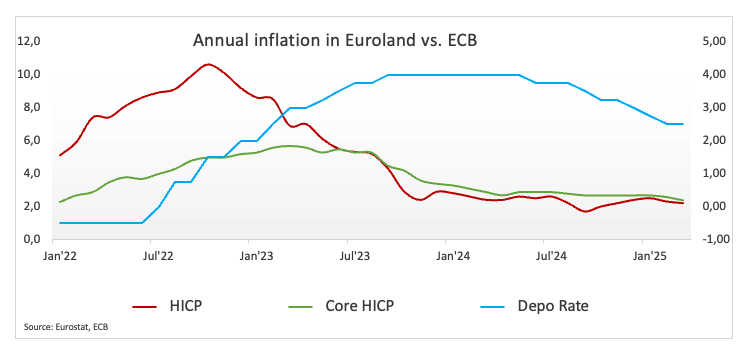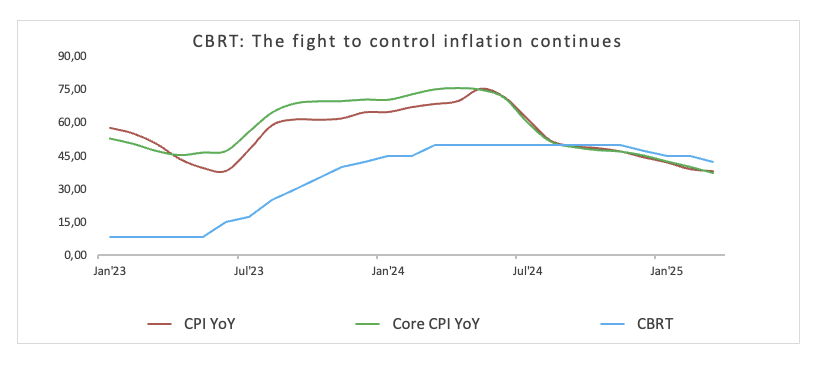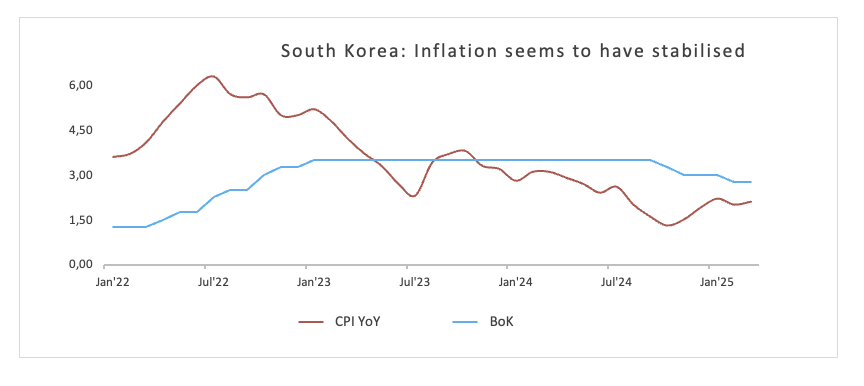As global markets gradually move beyond the inflationary aftermath of the COVID pandemic, central bankers have shifted their focus from solely controlling unusually high consumer prices to supporting economic activity toward more sustainable levels. Yet central banking has become increasingly challenging since around the start of the year. In addition to navigating the usual domestic economic dynamics at every policy meeting, central banks now face a significant external factor: the implementation of US tariffs affecting virtually every country worldwide.
Here is a summary of this week’s central banks’ interest rate decisions as well as their potential path forward:
Bank of Canada (BoC) – 2.75%
In a measured policy move, the Bank of Canada cut its key interest rate by 25 basis points to 2.75% in March. While signaling alarm over the possible economic fallout from President Donald Trump’s tariffs—described as “a new crisis” on the horizon—the BoC emphasised its need for caution. Balancing rising inflationary pressures against the drag of weaker demand, policymakers hinted that future adjustments would hinge on clarity around ongoing U.S. trade policies. In the next BoC statement, all eyes will be on how the bank addresses tariff-induced risks and Trump’s inconsistent rhetoric, as these factors continue to shape the BoC’s cautious outlook.

Upcoming Decision: April 16
Consensus: Cautious hold
European Central Bank (ECB) – 2.50%
Marking its sixth cut since June, the ECB reduced the deposit rate to 2.50% in a bid to counter muted inflation and flagging economic growth. Notably, the bank pointed out that inflation is inching closer to its 2% target—an indication that loosening monetary policy could remain on the table. However, President Christine Lagarde struck a careful balance, declining to commit to further cuts and underscoring that both a pause or additional easing are possible. With President Trump’s tariff actions still unresolved, ECB officials remain wary of the potential damage to global and Eurozone economies. Meanwhile, the Euro’s recent strength may help inflation drift lower, possibly giving the ECB added flexibility to keep its easing measures in place.

Upcoming Decision: April 17
Consensus: 25 basis point rate cut
Central Bank of the Republic of Türkiye (CBRT) – 42.50%
Turkey’s central bank proceeded with a 250-basis-point rate cut in March—its third consecutive move of that size—bringing the key rate to 42.50%. This decision, largely expected by markets, extends the easing cycle initiated back in December and capitalises on the momentum of lower inflation. Headline inflation dropped to 39.05% in February, a noticeable decline from its peak of over 75% last May. Although the bank’s long-term target hovers at 5%, it acknowledges that reaching this goal will take considerable time. Monthly inflation, meanwhile, cooled to 2.27%, underscoring the likelihood of further rate reductions down the line.

Upcoming Decision: April 17
Consensus: Hold
Bank of Korea (BoK) – 2.50%
In a departure from its previously tighter policy stance, the BoK surprised observers in February by cutting interest rates by 25 basis points and sharply lowering its GDP forecast to 1.5% for 2025 and 1.8% for the next year. The bank continues to expect inflation at 1.9% for both the current and coming year. This policy shift is aimed at bolstering Asia’s fourth-largest economy, which is grappling with the spillover effects of President Trump’s ongoing tariff moves and domestic political uncertainties. A weakening won has added another layer of complexity by intensifying concerns over currency volatility. Nonetheless, cooling inflation offers the bank some breathing room, allowing it to strike a balance between pro-growth policies and price stability.

Upcoming Decision: April 17
Consensus: Hold
Information on these pages contains forward-looking statements that involve risks and uncertainties. Markets and instruments profiled on this page are for informational purposes only and should not in any way come across as a recommendation to buy or sell in these assets. You should do your own thorough research before making any investment decisions. FXStreet does not in any way guarantee that this information is free from mistakes, errors, or material misstatements. It also does not guarantee that this information is of a timely nature. Investing in Open Markets involves a great deal of risk, including the loss of all or a portion of your investment, as well as emotional distress. All risks, losses and costs associated with investing, including total loss of principal, are your responsibility. The views and opinions expressed in this article are those of the authors and do not necessarily reflect the official policy or position of FXStreet nor its advertisers. The author will not be held responsible for information that is found at the end of links posted on this page.
If not otherwise explicitly mentioned in the body of the article, at the time of writing, the author has no position in any stock mentioned in this article and no business relationship with any company mentioned. The author has not received compensation for writing this article, other than from FXStreet.
FXStreet and the author do not provide personalized recommendations. The author makes no representations as to the accuracy, completeness, or suitability of this information. FXStreet and the author will not be liable for any errors, omissions or any losses, injuries or damages arising from this information and its display or use. Errors and omissions excepted.
The author and FXStreet are not registered investment advisors and nothing in this article is intended to be investment advice.
Recommended Content
Editors’ Picks

AUD/USD: Bulls need to clear the 200-day SMA
AUD/USD treaded water around 0.6360 after once again faltering near recent tops in the 0.6440 zone, always on the back of the intense recovery in the US Dollar. In the meantime, positive headlines on the US-China trade front could help the Aussie stay in the upper end of the range for the time being.

EUR/USD strengthens above 1.1300 on gloomy Fed’s Beige Book
The EUR/USD pair edges higher to around 1.1335 during the early Asian session on Thursday. Mitigating concerns over potential tariff threats by US President Donald Trump exerts some selling pressure on the US Dollar.

Gold corrected extreme conditions, struggles around $3,300
Gold extended its decline on Wednesday, slipping below the $3,300 mark per troy ounce in response to reports from the media suggesting the Trump administration is weighing tariff reductions on Chinese goods, a news that revived hopes of easing trade tensions and reduced demand for the yellow metal as a safe-haven asset.

TRUMP meme coin rallies following announcement of President Trump's upcoming dinner with top 220 holders
Official TRUMP rallied 50% on Wednesday after the team behind the meme coin announced plans for its top 220 token holders to have a dinner with President Donald Trump in May. The announcement also included an extension of the token's initial unlock plan by an additional 90 days.

Five fundamentals for the week: Traders confront the trade war, important surveys, key Fed speech Premium
Will the US strike a trade deal with Japan? That would be positive progress. However, recent developments are not that positive, and there's only one certainty: headlines will dominate markets. Fresh US economic data is also of interest.

The Best brokers to trade EUR/USD
SPONSORED Discover the top brokers for trading EUR/USD in 2025. Our list features brokers with competitive spreads, fast execution, and powerful platforms. Whether you're a beginner or an expert, find the right partner to navigate the dynamic Forex market.